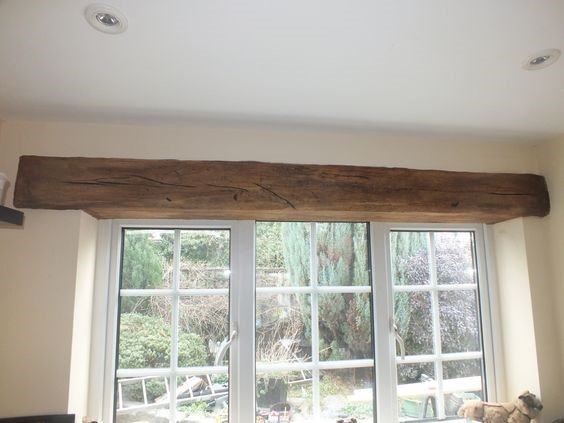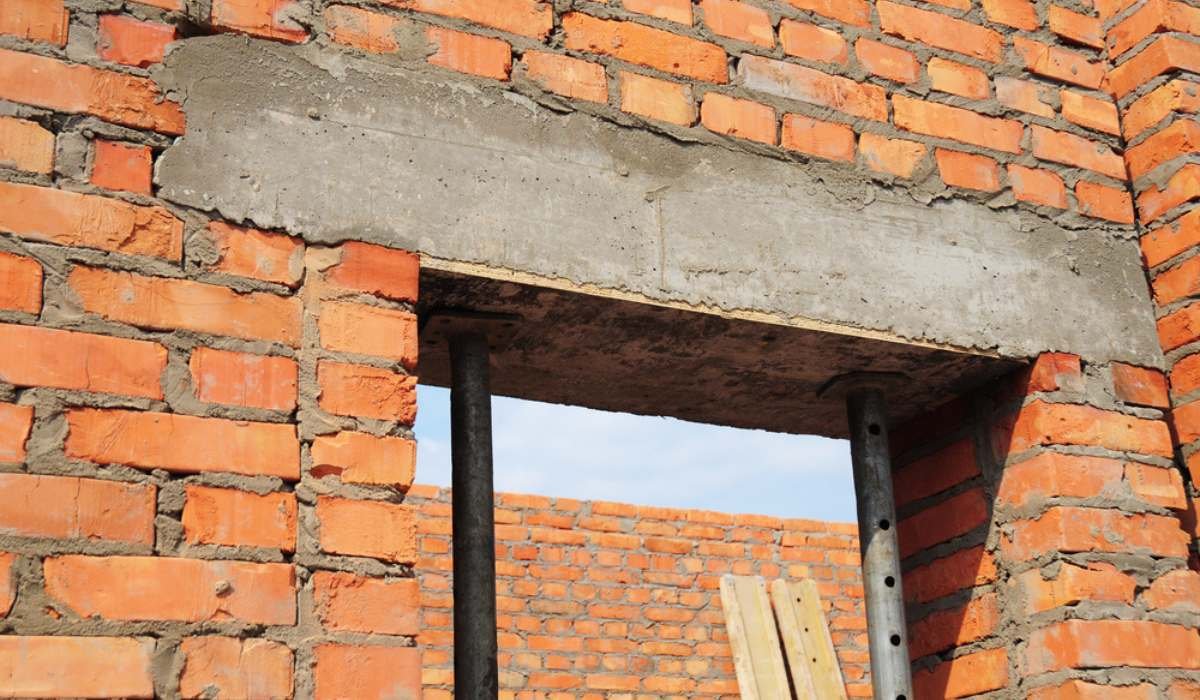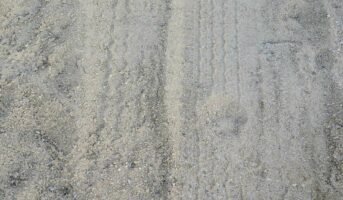There are numerous architectural considerations to take into account, whether creating a new building or rehabilitating an old one. A residence or building’s structural soundness and visual appeal can help guarantee its safety, usability, and attractiveness. To accomplish these aims, you can utilise lintels over your windows or entrances if your project is on a stone or brick structure. Read on to learn more about what lintel is and how it helps.
See also: Types of beams: Know importance, advantages and disadvantages
What is a lintel?
A lintel is a horizontal structural beam that spans across the top of a doorway, window or fireplace to support the weight of the structure above it. It helps distribute the load evenly, preventing the walls from collapsing. Lintels are made of a variety of materials, including stone, brick, concrete, steel, and timber. The choice of material depends on various factors, such as the load-bearing capacity required, the type of building, and local building codes.
Lintels play a crucial role in the stability of a building, and it is important to choose the right type and size to ensure that the structure is safe and secure. In addition to their functional aspect, lintels also serve an aesthetic purpose, serving as a decorative element that can enhance the overall appearance of the building.
In ancient times, lintels were made of stone and were often carved with intricate designs and symbols. Today, lintels are manufactured in a variety of shapes and sizes, making it possible to find one that is suitable for any building project. Whether a new building is being built or an existing one is being renovated, it is important to consider the role that lintels play in ensuring its structural integrity.
Lintel level
There are several levels available in all building construction styles. The lintel level is one such crucial level in building construction. The area of the superstructure between the top slab and the top of the window or door is referred to as the lintel level. Transmitting the incoming upward load to the neighbouring or surrounding wall is the main goal of the building’s lintel level.
Lintel: Uses
Lintel is used for the purposes listed below:
- The main aim of the lintel is to transfer weights from the wall directly above the doorway to the side walls or the support of a stone pillar.
- The lintel serves as a safety measure for the doors and windows as well.
- In masonry constructions, continuous lintels may offer support against lateral loads like wind or earthquakes.
- Lintels may be used to support the chimney above the fires.
- The canopy components may be supported by a lintel.
- By choosing ornamental lintels, a building’s architectural attractiveness can be improved. Lintel architecture should be this situation’s main focus.
- Lintels could be able to hold a short route. It may be called a lintel bridge.
Lintel: Characteristics
The general characteristics of a building lintel are as follows:
- Typically, the lintel beam terminates in a masonry wall. Sometimes, they are endings of columns.
- At either end, lintels need to be supported. They must be extended far enough to guarantee that the supporting brickwork is under no more stress than is safe. The bare minimum bearing length would be 100mm.
- The weight that lintels are carrying is transferred to the masonry walls.
- The supporting wall’s width and the lintel’s width are both maintained.
- The lintel can also be used as a vibrant compositional element.

Source: Pinterest
Lintel: Types
Lintels come in a variety of forms. Listed below are some typical lintel material types:
Wooden lintel

Source: Pinterest
Wooden or timber lintels, which are frequently used in mountain home construction, may be a beautiful and sturdy building element. However, as more readily available substitute materials with enhanced durability have gained favour, wood lintels have lost part of their appeal. Wood can be more fire-prone than other conventional lintel materials and is less robust despite being aesthetically beautiful. Steel bolts can be used by contractors to join many pieces of wood together and fit an aperture that is unusually large or lengthy. Another typical method that can offer extra support is the use of iron lintels or steel plates on the top and bottom of the timber.
Stone lintel
Due to its availability, stone may be a particularly popular lintel construction material. Stone lintel blocks are accessible in a variety of sizes and forms and don’t corrode as steel may. They are not usually the best choice for structures due to their susceptibility to cracking and poor resistance to vibratory stresses like those brought on by earthquakes. Stone lintels may provide masonry or stone buildings with a beautiful and consistent appearance when used in conjunction with them.
Steel lintel
When apertures are large, and the structural loads are significant, steel may be a very helpful building material. Steel supports may function alone or in conjunction with other steel elements, depending on the needs of the construction. Sometimes the stone is embedded directly into the wall or faces the individual steel components. Tube separators may help maintain the position of numerous pieces of steel. Although steel is exceedingly strong and may provide structural integrity for even the biggest wall gaps, it can occasionally be subject to corrosion.
Brick lintel
When the weight is light, brick lintels might be a good building material to use. The end joints of bricks made for this purpose frequently feature depressions called frogs that can aid in preventing shearing. Some refer to this approach as a joggled brick lintel.
Reinforced brick lintel
Bricks alone might not be sufficient to satisfy the project’s requirements if the weight is severe or the aperture is greater than a metre. In these situations, steel bars might aid in bolstering the brickwork. The steel rods, which are inserted as vertical stirrups within every third vertical joint and in the spaces of two to three centimetres length between adjacent bricks, along the bottom of the lintel, and between adjacent bricks, give the bricks extra structural support and improve their carrying capacity.
Reinforced concrete lintel

Source: Pinterest
Due to their rigidity, load-bearing capabilities, strength, fire resistance, affordability, and convenience of use, reinforced cement concrete lintels are a common choice. Concrete lintels are reinforced by bottom bars and shear stirrups. Concrete boot lintels may be a beautiful and economical option when used above cavity walls.
FAQs
What is a lintel?
A lintel is a horizontal beam that spans across the top of a doorway, window, or fireplace to support the weight of the structure above it.
What materials are lintels made of?
Lintels can be made of stone, brick, concrete, steel, or timber, depending on the load-bearing capacity required and local building codes.
| Got any questions or point of view on our article? We would love to hear from you.
Write to our Editor-in-Chief Jhumur Ghosh at jhumur.ghosh1@housing.com |
Housing News Desk is the news desk of leading online real estate portal, Housing.com. Housing News Desk focuses on a variety of topics such as real estate laws, taxes, current news, property trends, home loans, rentals, décor, green homes, home improvement, etc. The main objective of the news desk, is to cover the real estate sector from the perspective of providing information that is useful to the end-user.
Facebook: https://www.facebook.com/housing.com/
Twitter: https://twitter.com/Housing
Email: editor@housing.com












